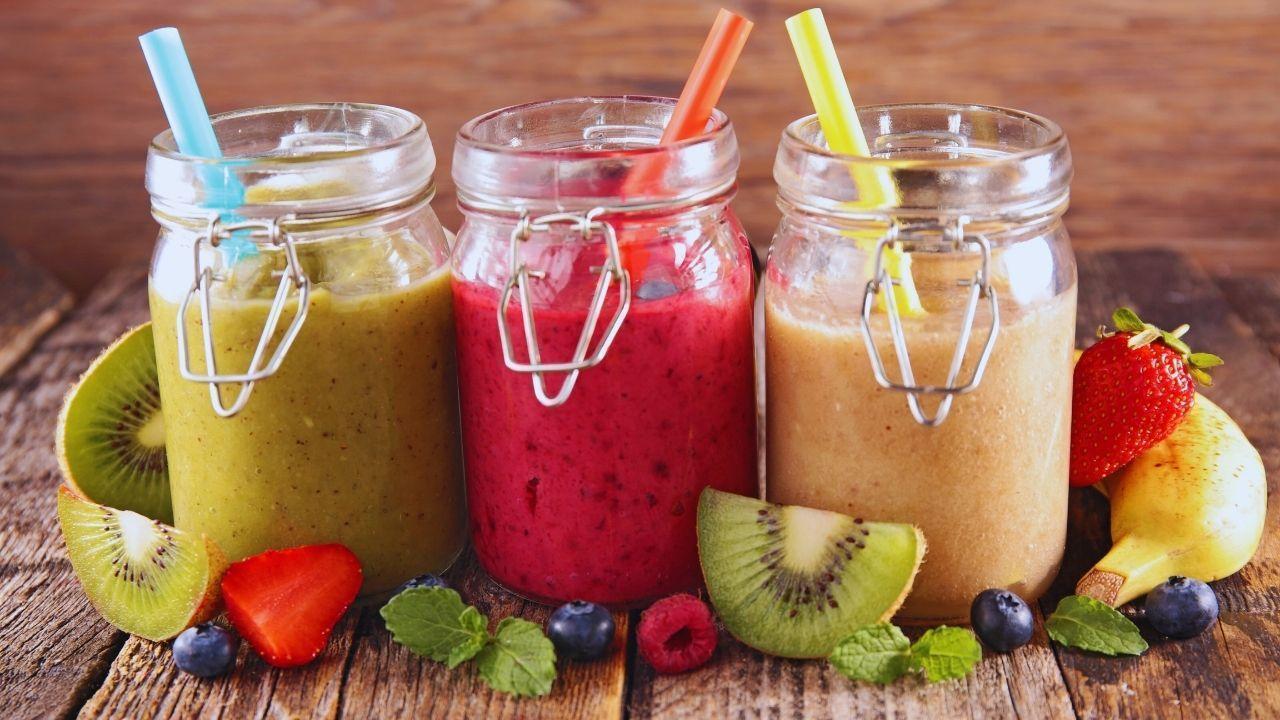
Join 10k+ people to get notified about new posts, news and tips.
Do not worry we don't spam!

Post by : Anis Farhan
Zero-waste shopping is no longer just a boutique trend reserved for eco-conscious influencers and premium organic stores. In 2025, it has become part of the daily routine for ordinary people across Southeast Asia and beyond. Whether in bustling city markets or small-town stalls, shoppers are increasingly skipping plastic packaging, bringing their own jars, bags, and containers, and choosing vendors that support sustainable practices. It’s a quiet revolution—and it’s being driven not by corporations, but by people.
In Penang, Johor, Jakarta, or Jaipur, it’s now common to see someone carrying a steel tiffin box for lentils or using a repurposed jar to collect cooking oil. These aren't symbolic gestures—they’re practical, cost-saving decisions. And the impact is real.
Unlike earlier perceptions of zero-waste as expensive or inaccessible, the trend now thrives on affordability and simplicity. Shoppers are discovering that buying rice, oil, or spices in bulk—without the burden of plastic—actually costs less. There’s no fancy branding or layered packaging to pay for, and consumers avoid paying for things they don’t need.
Many middle-class families report saving small but consistent amounts each month simply by avoiding unnecessary packaging. A homemaker in Penang noted how her weekly vegetable budget dropped by 10% after switching to her local market, where produce comes unpackaged and measured fresh into her own cotton bags. It's not just about saving the planet—it’s also about saving money.
The change isn’t one-sided. Small vendors and local stall owners are adapting fast. Some are now actively encouraging customers to bring their own containers by offering small discounts or reward tokens. Others are ditching disposable packaging altogether to save on operational costs.
At Chow Kit market in Kuala Lumpur, multiple stalls have adopted a “BYOB” (Bring Your Own Bag) policy. In many cases, this started organically—vendors realized that packaging costs were rising and customers weren’t complaining when asked to bring their own containers. For sellers, this means higher margins and more loyal customers. For buyers, it’s a small but satisfying step toward responsible living.
While major supermarket chains are experimenting with refill aisles, the real growth in zero-waste shopping is happening in informal markets and small refill stations. These setups, often found in neighborhood corners or as part of pop-up events, allow people to bring containers and fill up on essentials—detergent, shampoo, grains, pulses, and cooking oil.
In parts of Jakarta, mobile refill vans now visit residential colonies weekly. People fill their containers on the spot, often at prices cheaper than retail chains. In India, community-run refill centers have appeared in towns like Pune and Kochi, supported by local sustainability NGOs.
These refill models are gaining traction because they are simple, scalable, and make environmental choices accessible. One such station in Bhubaneswar reportedly prevented over 10,000 plastic pouches from entering the landfill in just three months.
While the movement is largely grassroots-led, governments across Asia are beginning to lend support. Several cities now offer incentives to local vendors who minimize plastic use. In Bangkok, green tax rebates have been introduced for small stores that commit to waste-reducing practices. In India, cities like Indore and Mysuru have launched zero-waste pilot zones where single-use plastic is strictly banned and local markets are encouraged to adopt sustainable alternatives.
These interventions are often simple: distributing cloth bags, organizing awareness camps, or giving visibility to low-waste stalls through government apps. But their impact is significant. They validate what communities are already doing and provide infrastructure to scale it further.
Ironically, what’s seen as a modern movement is actually a revival of past habits. A generation ago, bringing tins to buy biscuits or cloth bags for vegetables was the norm. Plastic bags were a latecomer in most Asian societies. Now, many older residents see zero-waste shopping as a return to common sense rather than innovation.
In Johor, 72-year-old Mr. Tan, who sells homemade pickles, recalled how his mother never allowed plastic in the kitchen. “We stored everything in steel or glass. It kept food better, and we wasted nothing,” he said. Now, customers bring him jars to take his pickles home—just like they did in the 1960s.
This deep cultural connection is helping zero-waste practices feel familiar rather than foreign. It’s not about mimicking the West—it’s about reconnecting with indigenous, practical habits that served generations well.
Social media, especially TikTok and Instagram, is helping spread awareness among young adults. Short videos showcasing eco-friendly shopping hacks—like folding cloth bags into keychains, turning old jars into spice holders, or creatively storing food without plastic—are going viral. Hashtags like #BYOBAsia, #ZeroWasteLife, and #NoPlasticChallenge have created micro-communities where people share ideas, market reviews, and even zero-waste recipes.
In many universities across Southeast Asia, students are launching on-campus refilleries, swap stalls, and community kitchens that reduce packaging waste. They’re not waiting for supermarkets to change—they’re building the change from the ground up.
Peer influence is also powerful. In schools, some students proudly bring metal tiffins and reusable bottles. Seeing others make those choices often nudges more families to follow suit. The behavior spreads organically, without the need for campaigns or lectures.
Of course, the shift is not without friction. Busy professionals often find it hard to plan bulk shopping trips. Some still question hygiene at open refill stations. And in certain rural areas, access to eco-alternatives remains limited.
But the larger cultural trend is unmistakable. What once felt inconvenient is now becoming normalized. More people are choosing function over flash—carrying what works, buying what lasts, and avoiding what pollutes.
The packaging isn’t the product anymore. The content is.
Looking ahead, the zero-waste market ecosystem is expected to evolve. Cities may soon have shared community container banks, where people can borrow containers and return them after use. Mobile refill vans are likely to expand in tier-2 and tier-3 towns. Tech startups may introduce apps that reward eco-friendly purchases through digital tokens or credits, redeemable at partnered stores.
There’s also room for cross-industry collaboration. Imagine ordering groceries online but choosing a zero-waste delivery option—where items arrive in reusable, returnable containers. Or buying household cleaners that come with refill codes you scan to find your nearest eco-kiosk.
What’s exciting is that none of this requires futuristic tech. It requires will, collaboration, and recognition that sustainability is not a lifestyle for the elite—it’s a survival habit for everyone.
In 2025, zero-waste shopping is no longer a slogan or an aspiration. It’s a lived reality for millions. People are turning away from disposable convenience and rediscovering durable choices that benefit both their wallets and the planet. Vendors are adapting, cities are responding, and communities are leading.
It’s not a flashy movement—it’s a steady one. And its power lies in its simplicity.
Whether you’re filling oil in a reused bottle or carrying your veggies in a cloth bag, you’re part of something bigger. Something cleaner, smarter, and more connected to how life used to be—and should be again.
This article is based on public trends, consumer interviews, and observable market practices in 2025. Individual shopping experiences and government policies may vary by region. Readers are encouraged to consult local guidelines and vendors for specific zero-waste options.










Mitchell Marsh Backs Aggressive Plan Ahead of India T20 Series
Australia captain Mitchell Marsh says his team will continue playing fearless cricket as they prepar

Smriti Mandhana Becomes World’s No.1 ODI Batter
India’s Smriti Mandhana rises to No.1 in ICC Women’s ODI rankings with a career-best rating of 828 a

Suryakumar Yadav Focuses on Team Spirit and Fielding Goals
India captain Suryakumar Yadav stresses teamwork, energy, and stronger fielding efforts ahead of the

Sherwood Leads Canucks to Overtime Win Against Oilers
Kiefer Sherwood scored twice, including an overtime winner, as Vancouver Canucks defeated Edmonton O

Freeman Leads Dodgers to 6-5 Thriller Over Blue Jays
Freddie Freeman’s 18th-inning walk-off homer gives the Dodgers a thrilling 6-5 win over the Blue Jay

Bayern Target Another Victory in German Cup Match
Bayern Munich look to continue their perfect start to the season with a German Cup clash against Col